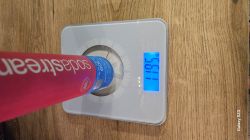agosciniecki wrote: I, an undereducated old man, put forward such a conclusion.
.
I consider this conclusion to be wrong because it does not accurately describe the problem.
Everything looks clear in the case of a gas but we are dealing with a liquid - the CO2 in such a cylinder is a liquid above whose surface the gaseous fraction of the same CO2 floats. As the cylinder is in thermodynamic equilibrium, the pressure in it corresponds to the saturated vapour pressure of the gas in question (that is CO2) at a given temperature.
agosciniecki wrote: The solution, in my opinion, would be higher pressure supply cylinders, suitably protected against overcharging of the receiver cylinders,
.
According to the above, you will not get a cylinder charged to a higher pressure because it will be one based on temperature.
When filling a SodaStream cylinder, we are concerned with pumping the liquid fraction of CO2 from the large cylinder to the small cylinder, the gaseous fraction can either help or hinder this because its pressure affects the liquid phase transport process.




